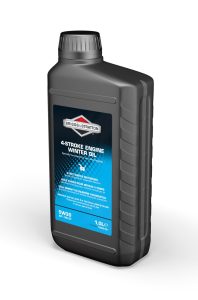If you’re looking for a way to ruin your engine, overfilling engine oil by 1/2 quart is a great way to do it. By doing this, you’ll be sure to cause all sorts of problems, from oil leaks to decreased performance. So, if you’re in the market for some engine trouble, be sure to overfill your oil by a 1/2 quart!
What Happens When You Overfill Your Engine Oil by 1/2 Quart?
Contents
If you overfill your engine oil by 1/2 quart, it will not damage your engine. However, it can cause some issues.

The extra oil will cause the engine to run hotter because it will not be able to dissipate heat as well. This can lead to decreased fuel economy and increased emissions. Additionally, the oil may get into the combustion chamber and cause smoking or knocking.
How Can Overfill Your Engine Oil by 1/2 Quart Cause Damage?
Overfilling engine oil by 1/2 quart can damage your engine by causing oil to seep into the combustion chamber. This can lead to reduced efficiency and increased emissions.
Additionally, overfilling can cause the oil to foam, which can reduce its ability to lubricate and cool the engine.
What Are the Consequences of Overfilling Your Engine Oil by 1/2 Quart?
Overfilling your engine oil by 1/2 quart can have a number of consequences, the most serious of which is engine damage. Other potential consequences include increased fuel consumption and reduced engine efficiency.
How Can You Avoid Overfilling Your Engine Oil by 1/2 Quart?
It is important to avoid overfilling your overfilling engine oil by 1/2 quart. Overfilling can cause engine damage, and it can also lead to oil leaks. You can avoid overfilling your engine oil by checking the oil level regularly and adding oil as needed. It is also important to use the correct type of oil for your engine.
How to Check Your Engine Oil Level
If your car’s engine is low on oil, it can cause serious damage. That’s why it’s important to check your oil level regularly and top off if necessary. Here’s how:
- Park your car on level ground and wait until the engine is cool.
- Locate the dipstick. On most cars, it’s near the front of the engine, towards the back of the dipstick tube.
- Pull out the dipstick and wipe it clean with a rag.
- Insert the dipstick all the way back in and then pull it out again to check the level. The oil should be between the minimum and maximum marks on the dipstick.
- If the oil level is below the minimum mark, add oil a little at a time until you reach the maximum mark. Do not overfill!
What to Do if You Overfill Your Engine Oil by 1/2 Quart
If you accidentally overfill your engine oil by 1/2 quart, don’t panic. While it’s not ideal, it’s not the end of the world either. Here’s what you need to do:
- Drive the car for a few minutes to allow the excess oil to circulate.
- Check the oil level again and if it’s still too high, remove the oil filler cap and let the excess oil drain out until the level is correct.
- Replace the oil filler cap and check for leaks.
- Check your owner’s manual for specific instructions on what type and how much oil to use in your car.
How Often Should You Change Your Engine Oil?
How often you should change your engine oil depends on the age, make, and model of your vehicle, as well as your driving habits. Many automakers have oil-change intervals at 7,500 or even 10,000 miles and 6 or 12 months for time.

However, if you make frequent short trips, drive in stop-and-go traffic, or haul loads with your vehicle, you might have to change your oil more often. Based on these types of driving conditions, you might need an oil change as frequently as every 3,000 miles or 3 months, whichever comes first.
Tips for Changing Your Engine Oil
If you’re thinking about changing your own engine oil, it’s important to know how much oil your car’s engine holds, and what the best type of oil is for your car. It’s also important to be aware of the dangers of overfilling your engine oil.
Engine oil capacity varies depending on the make and model of your car, so it’s important to consult your owner’s manual or a reliable automotive website to find out how much oil your car’s engine holds. Once you know this number, you can purchase the appropriate amount of oil.
It’s also important to choose the right type of oil for your car. Again, consult your owner’s manual or a reliable automotive website to find out what type of oil is recommended for your car. You may also want to consider synthetic oils, which can provide better protection for your engine.
Finally, be aware of the dangers of overfilling your engine oil. Overfilling can cause damage to your engine and may lead to expensive repairs. If you’re unsure about how much oil to add to your car, it’s always best to err on the side of caution and add a little less than the recommended amount.
